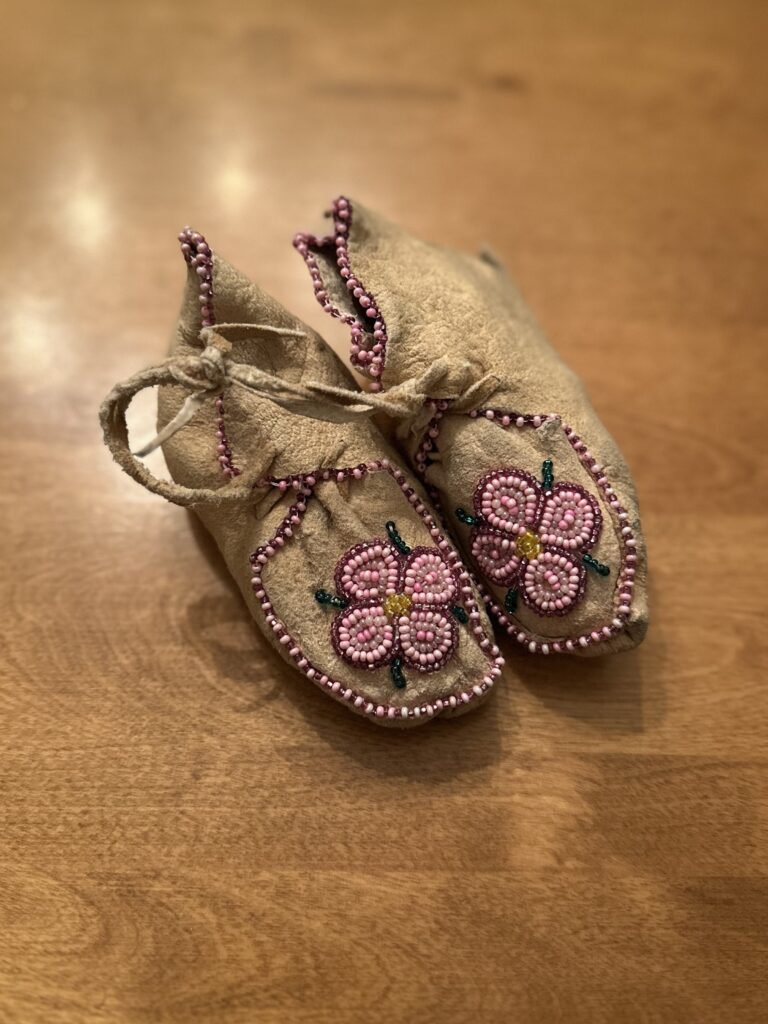The Métis people come from the blending of European fur traders (often French or Scottish) and Indigenous women, especially from the Cree, Anishinaabe, and Saulteaux Nations. Over time, the Métis formed their own unique culture, language (called Michif), and way of life. Art has always been an important part of Métis identity, helping to tell stories, keep traditions alive, and express pride in who we are. I feel especially connected to this culture because it is part of my own heritage, and I already have some background knowledge and understanding of its art forms and traditions.
Beadwork & Embroidery
For hundreds of years, Métis women have decorated nearly every piece of clothing they could, from the famous beaded moccasins to vests, gloves, and tobacco pouches. These beautiful creations were not only a form of artistic expression but also a way for women to support their families and share their creativity with others. Because of the prevalence of floral motifs in their beading and embroidery, the Dakota and Cree referred to the Métis as the “Flower Beadwork People.”
Historically, Métis beadwork used materials available to Indigenous artists such as bone, shell, seeds, rawhide. Over time, Métis women began working with glass beads and European fabrics (wool cloth, velvet). Below I’ve attached a picture of my own baby moccasins, the beading motif is a traditional prairie rose.

Techniques involved threading beads onto sinew or thread, stitching onto cloth or hide, and layering motifs to build depth. In many cases, embroidered beadwork was incorporated into everyday objects and clothing.
Metis Dot Art
Dot art is a modern way of re-creating traditional Métis beadwork, where each painted dot represents a single bead. To make dot art, you can use acrylic paint and tools like toothpicks, pins, pencils, or wooden sticks to place each dot carefully on your surface.
The Metis Sash
Since the late 1700s, the Métis sash or “arrow belt” has been an important symbol of Métis identity. Originally based on First Nations finger-weaving techniques and European materials, Métis women created sashes in distinctive colors and patterns using wool from fur trade sources. Beyond decoration, the sash was practical, it was used as a rope, harness, towel, or to carry personal items. Today, while most sashes are machine-made, traditional finger-weaving is being revived and taught to younger generations, preserving this important Métis craft and cultural heritage.

Sorry, but comments are not enabled on this site.